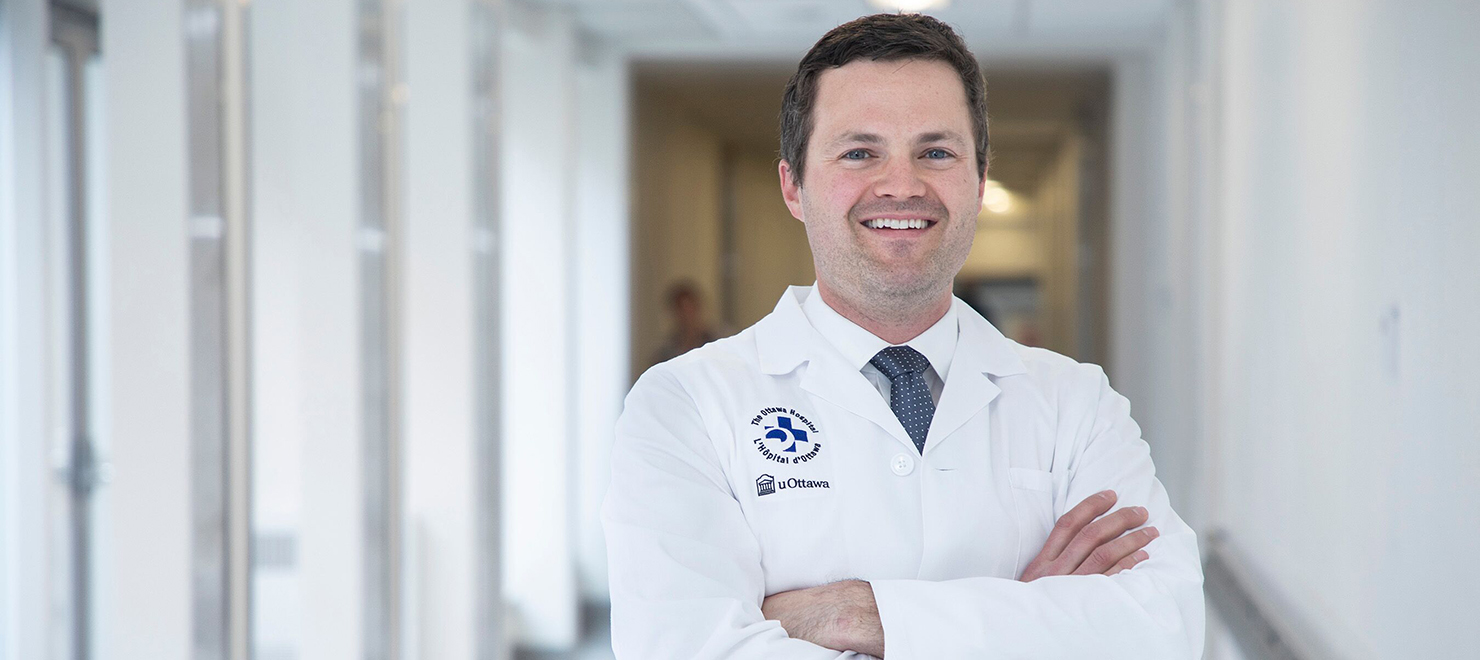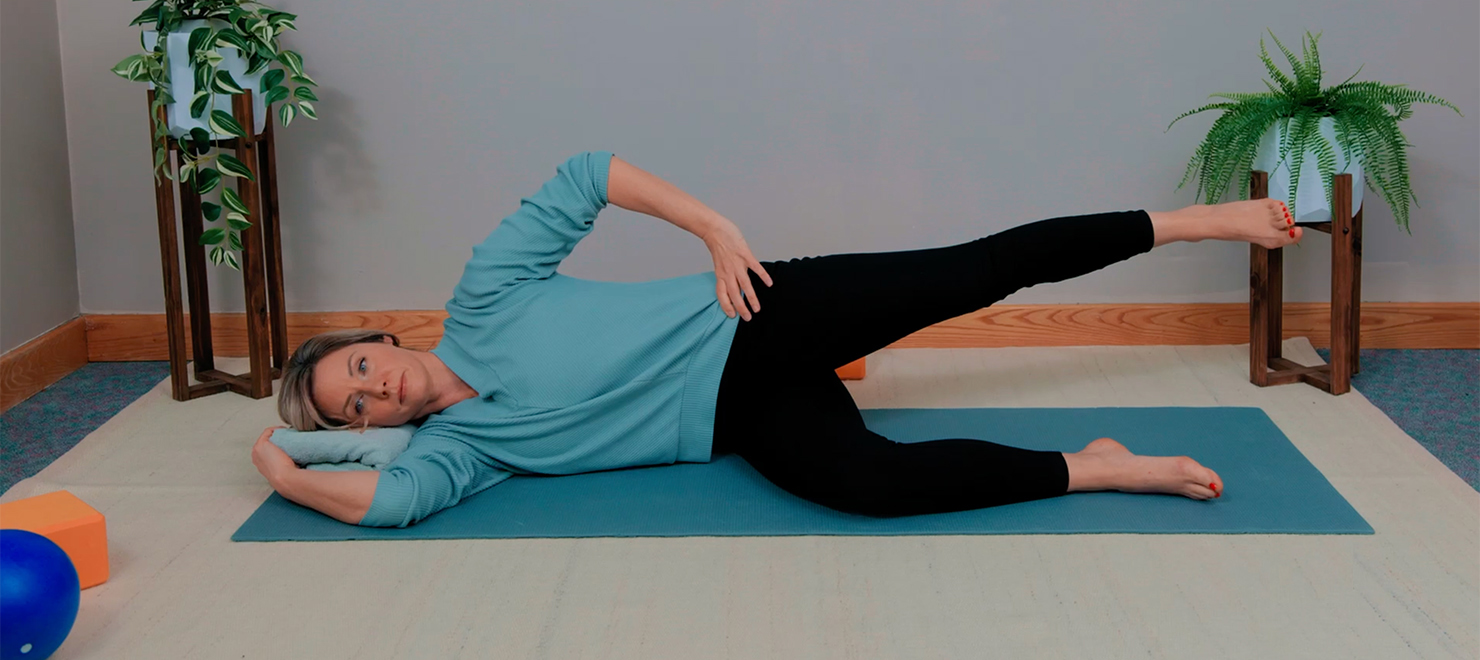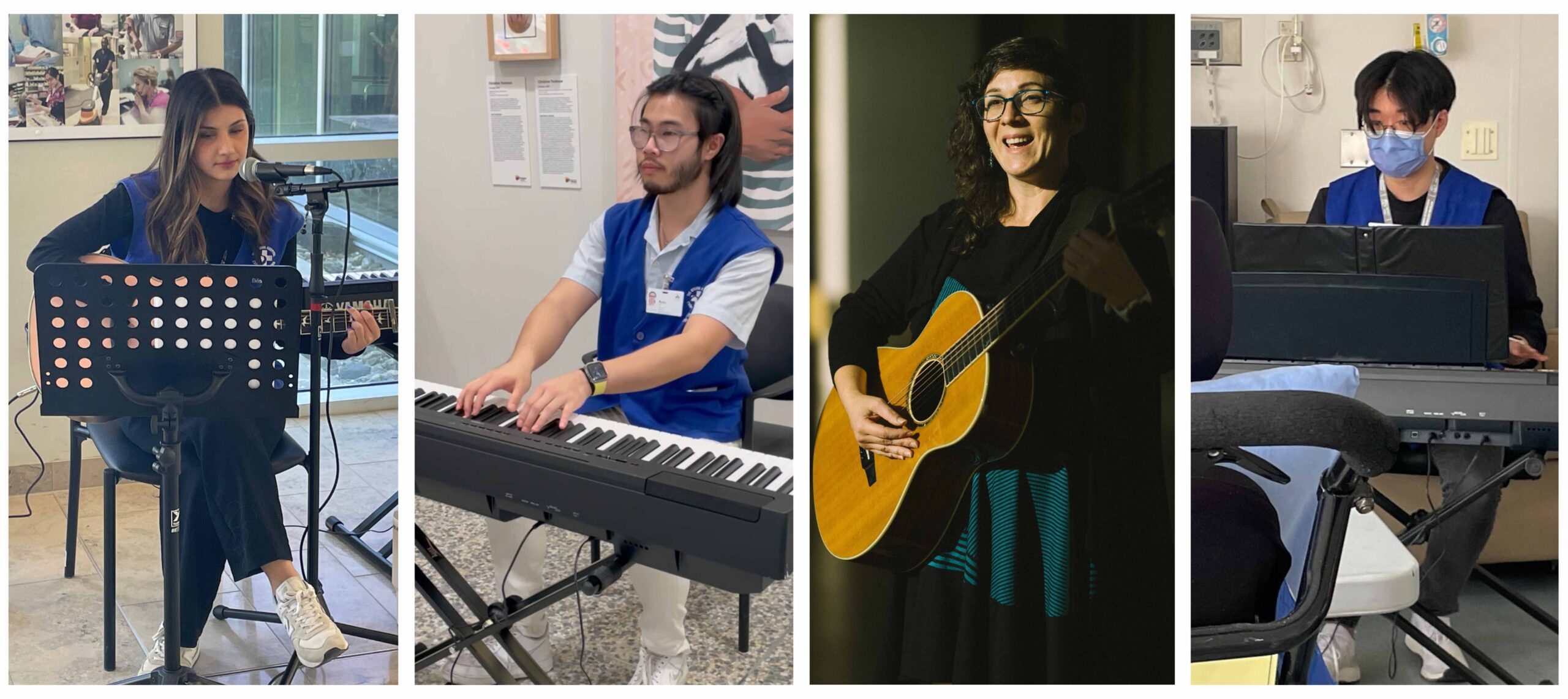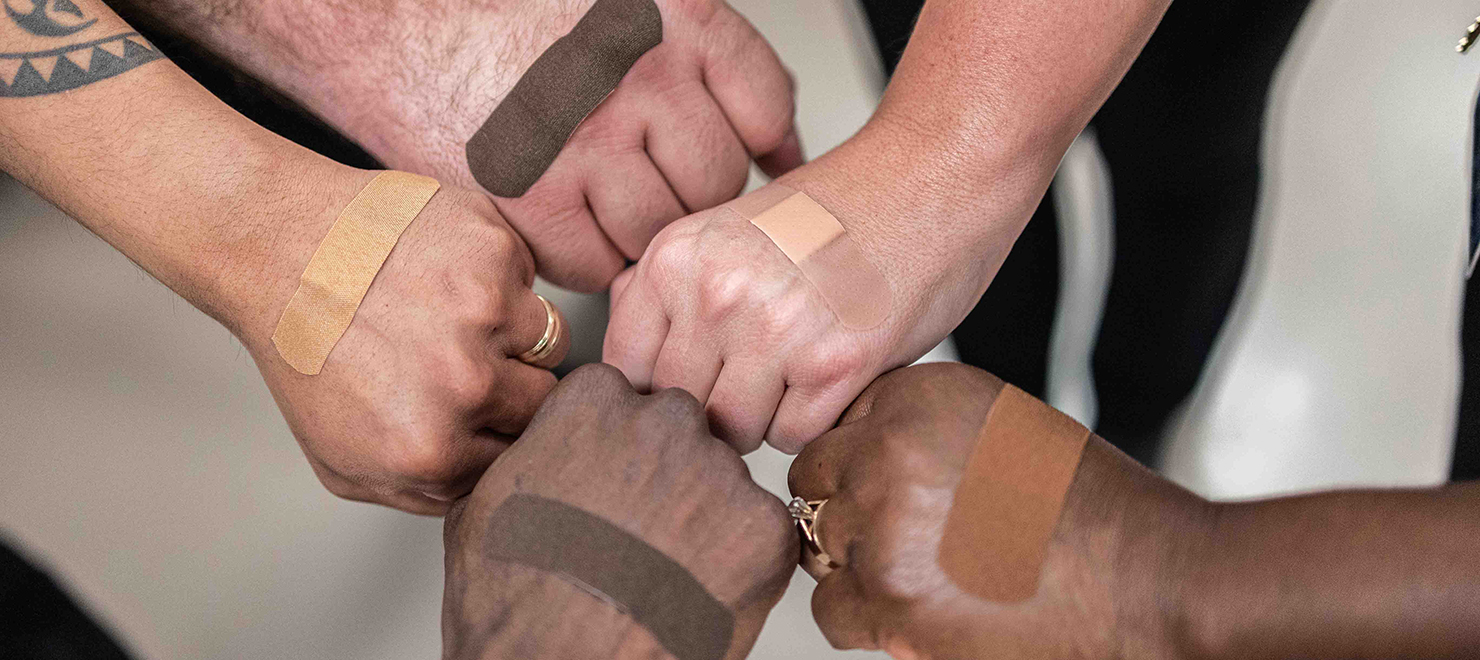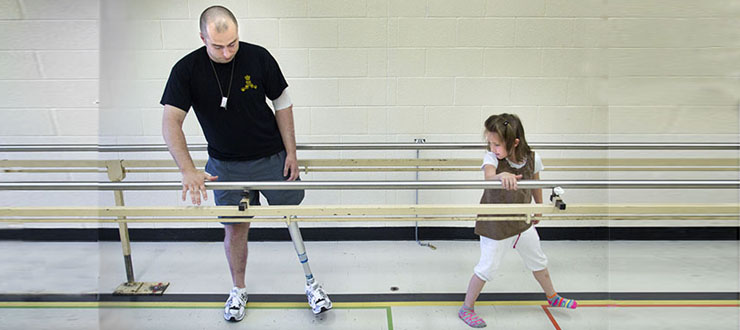
When Bjarne Nielsen was serving in Afghanistan, he had no idea that one lifechanging moment would lead him more than 10,000 kilometres away to The Ottawa Hospital.
The Sergeant in the Canadian Armed Forces was leading a patrol on July 1, 2010 when an improvised explosive device (IED) exploded. The blast launched him into a nearby field and caused catastrophic injuries to the left side of his body.
He was conscious while the other soldiers in his troop provided emergency first aid. Soon after, he was extracted by helicopter to a medical facility in Kandahar for trauma care. There, doctors amputated his left leg just below his hip and tended to a separated shoulder, a fractured arm and an obliterated left elbow.
“They pieced me together the best they could at the time,” Bjarne said. “That was the beginning of my healing journey.”
“I didn’t want to show people that I was suffering, but I did. “
That journey included about ten days at Ramstein Air Base in Landstuhl, Germany, where his family flew in to be at his bedside, followed by a transfer back to Canada for four months of care at Toronto’s Sunnybrook Hospital, and more rehabilitation care at London Health Sciences Centre (LHSC).
Bjarne did his best to cope with his new reality, but like many newly-injured patients, he struggled at times.
“I didn’t want to show people that I was suffering, but I did,” he said. “I did share my hardships and I did share that I had a lot of struggles. I had to relearn who I was—not mentally, because I’m still the same guy, but physically I’m not jumping out of airplanes or kicking in doors and stuff like that anymore.”
He maintained perspective by thinking about the families he had helped in Afghanistan. Part of his duties involved helping them access clean drinking water and teaching them how to farm. He knew he had made a difference.
Once discharged from LHSC, Bjarne continued regaining his strength at home by doing sit-ups in bed and one-armed inclined push-ups on the stairs.
“There’s always something I could do,” he said. “My wounds were on the mend and I was getting stronger, and I thought maybe—just maybe—I could start looking into prostheses.”
A contact from the Armed Forces in Petawawa recommended that he contact the Rehabilitation Centre at The Ottawa Hospital.
Taking his recovery to the next level

The Ottawa Hospital Rehabilitation Centre is home to a very comprehensive and advanced amputee rehabilitation program where all patients receive individualized rehabilitative care. Many members of the Canadian Armed Forces, including soldier-turned-athlete Mike Trauner, have benefited from the expertise of doctors, nurses, prosthetists, physiotherapists, recreation therapists occupational therapists, social workers, psychologists and others working as a team to maximize each patient’s potential.
In their first meeting, it was clear to Dr. Nancy Dudek that Bjarne had great potential. Dr. Dudek is the Medical Director of the Amputee Program at The Ottawa Hospital Rehabilitation Centre and a professor at the University of Ottawa.
“When I examined him, he was able to go down into a full squat and stand back up without holding anything for support,” she recalled. “And it was pretty clear that we could design a rehabilitation program for him to work with what he had.”
“That’s when things really started to take off,” said Bjarne.
“I was very blessed to have these gifts given to me and people put in front of me that had this wealth of knowledge so that I could learn a lot along the way.”
Using advanced technology to learn to walk again
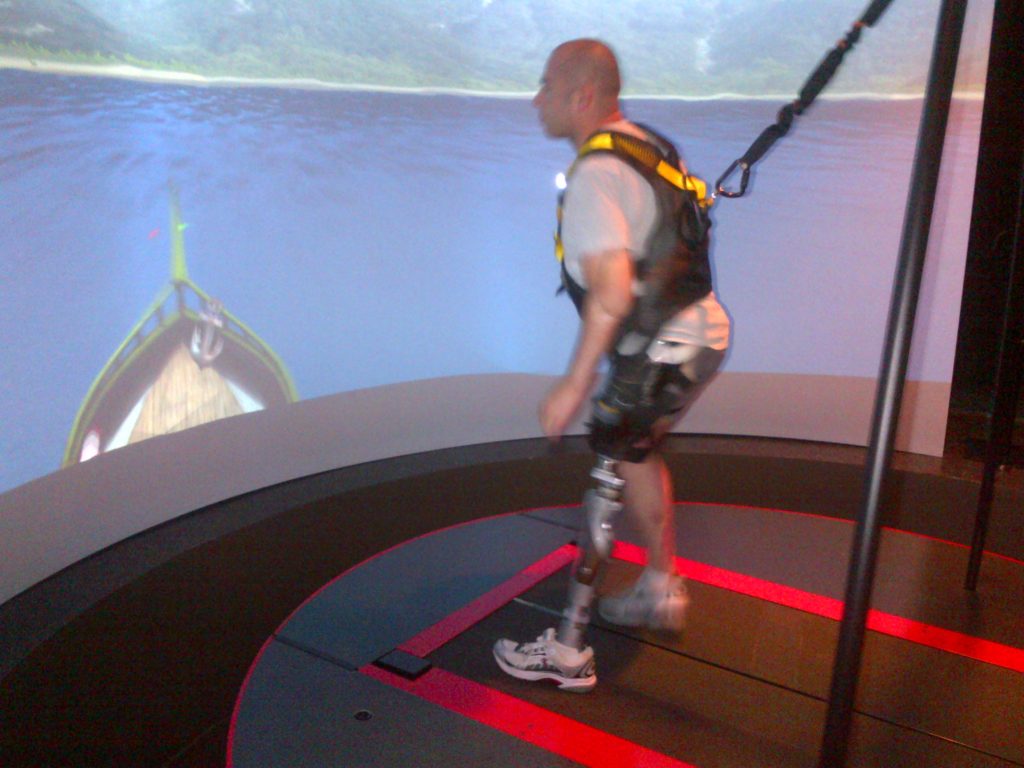
Bjarne was fitted for a prosthetic leg and began learning how to use it. He had sessions in The Ottawa Hospital’s Rehabilitation Virtual Reality Lab, a state-of-the-art facility for physical rehabilitation assessment, therapy and research. The lab includes the CAREN system, which combines room-sized 3D graphics, a platform that moves with the person as they explore the 3D world, a dual-tread remote-controlled treadmill, and world-class motion analysis technology where patients can practice using their prosthesis in different terrain safely.
Bjarne excelled at using the CAREN system.
“The system has a variety of challenges, like who can walk up or down the steepest angle, or who can move through a set course the quickest, and certainly he was a record holder in a lot of them,” said Dr. Dudek.
But Bjarne would certainly face some challenges along the way. Typically when a person learns to walk on a prosthetic leg, they rely on both arms to help keep them steady at first. Since Bjarne’s left arm was still unreliable, Dr. Dudek and the team needed to be careful not to cause further injury or damage in the course of his rehabilitation.
Recovery as a team effort
After six months of hard work at the rehabilitation centre, Bjarne travelled home with a set of new skills and a deep appreciation for the care he received.
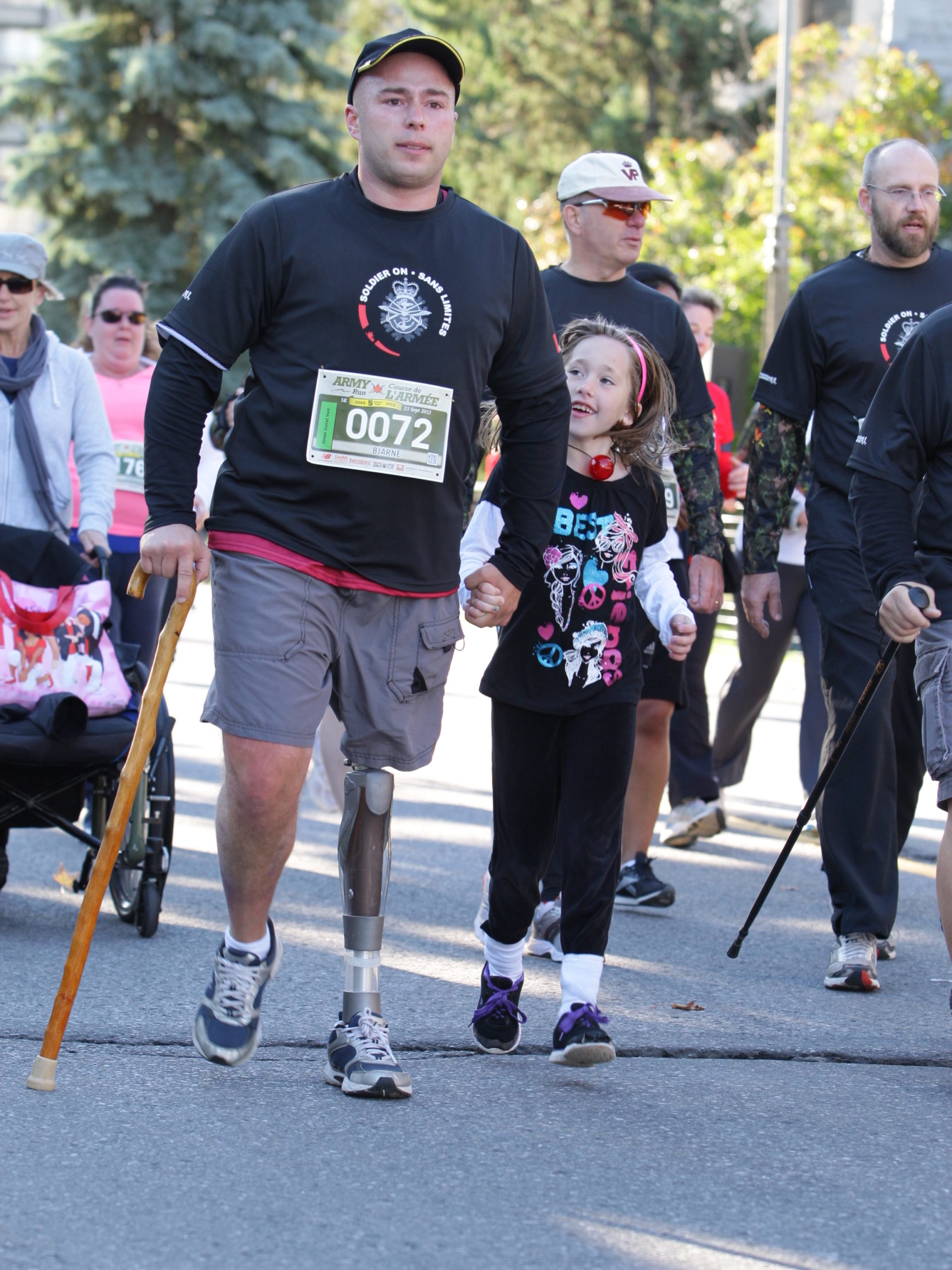
“I was very blessed to have these gifts given to me and people put in front of me that had this wealth of knowledge so that I could learn a lot along the way,” he said.
“It’s incredibly rewarding to see that my patients are doing well and that they’re happy, and to be able to play a part in that is very meaningful to me.”
He is similarly thankful to everyone who helped him along his health journey—the soldiers who provided first-aid at the blast site, his family and friends, and the medical professionals overseas and in Canada who have helped him reach this point. He knew he couldn’t have done it alone.
“If you could put rehabilitation into a percentage and 100 percent is fully recovered, 49 percent of that number is all those people who are involved along the way—doctors, nurses, physios, all the people in health care—plus family and friends. The other 51 percent has to be me,” he said. “I have to have that will to give that little bit more than what everyone else is giving. I have to want the help, to accept the help, to do good with the help that I’ve been given.”
Like many people who live with a prosthesis, Bjarne will continue to see Dr. Dudek and his prosthetist for follow-up appointments.
“What I want for any individual who has gone through this type of life-altering situation is to come out on the other side with the life that they’re happy with,” Dr. Dudek explained. “To be able to play a part in that is very meaningful to me.”
“I’m thankful that I have the opportunity to use these gifts I’ve been given to do some good with my life.”
Still achieving incredible things
Bjarne retired from the military in 2017, but continues to challenge himself. He was part of a documentary March to the Pole that followed a group of injured Canadian soldiers as they attempted to ski across 125 kilometres of harsh terrain to reach the Magnetic North Pole. He appeared on television with Mike Holmes as they repaired the roof of his grandfather’s barn. He bought a 30-acre property in Belize and turned it into a citrus farm.
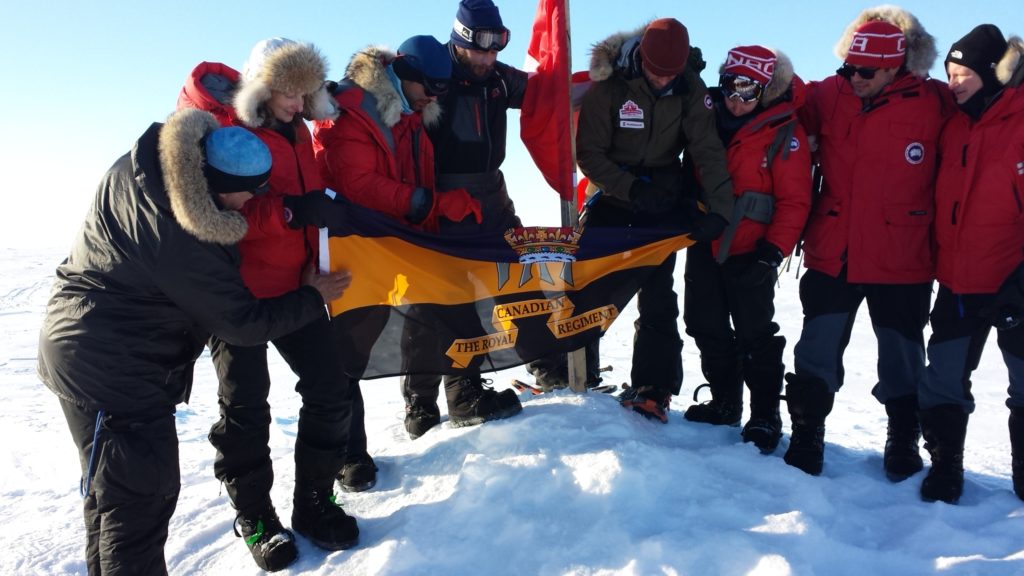
“You don’t need to be defined just by your accomplishments or your career,” he said. “There’s more to you, even after an injury. I’ve had a beautiful, blessed, wonderful career. I’ve participated in all kinds of positive experiences. I’m thankful that I have the opportunity to use these gifts I’ve been given to do some good with my life.”
He knows that rehabilitation can be a long and difficult road, and he has this advice for anyone who is going through it:
“If you have the will, you can succeed. You’ve got to ask yourself ‘what do you want?’ and then have a bit of patience and a bit of discipline to get there.”

Support patient care and research at
The Ottawa Hospital
You might also like…
Do you have a surgery coming up? Here are five “prehab” tips to help you recover faster
You’ve probably heard about rehabilitation, but what about “prehabilitation”? Prehab is all about getting your body and mind in top shape before surgery so you can enjoy a smoother, quicker recovery. Discover five essential prehab strategies from researcher Dr. Daniel McIsaac.
A guide to mindful movement for pain management
Are you seeking relief from pain, discomfort or stress? In these four videos, Physiotherapist Cristin Kargus guides you through gentle, mindful movements to help you reconnect with your body.
The place to be: The Ottawa Hospital recognized as one of Canada’s most admired corporate cultures
The Ottawa Hospital (TOH) has been named one of Canada’s most admired corporate cultures. Guided by compassion and commitment to patient care, TOH has developed a workplace culture that inspires confidence and trust in our employees, patients and family members.
Watch: Princess Margriet of the Netherlands sent us this lovely video message for the Civic’s 100th anniversary
If you’ve ever wondered why tulips are so important to our city, the answer involves a world war, a royal family and The Ottawa Hospital’s Civic Campus. In this special video message, Her Royal Highness Princess Margriet of the Netherlands shares why the tulip is a special symbol of the endearing friendship between her country and Canada.
A volunteer program that taps into the power of music
Studies have shown that music can benefit the body, mind, relationships and community. Musical Moments is a program where volunteers play live music to support positive outcomes for patients, visitors and staff.
We’ve got you covered: The Ottawa Hospital now offers bandages for a variety of skin tones
Whenever you’ve scraped your knee or had your blood drawn, odds are your bandage was the same colour every time. Peach has been the default hue for over a century — but no longer at The Ottawa Hospital.


 To reset, hold the Ctrl key, then press 0.
To reset, hold the Ctrl key, then press 0.
